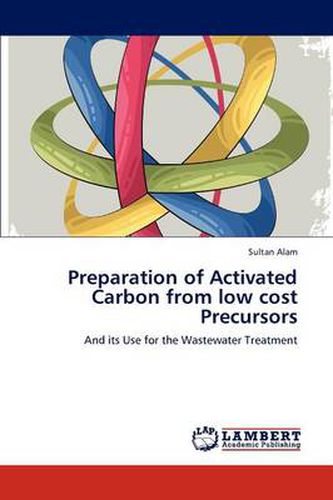Readings Newsletter
Become a Readings Member to make your shopping experience even easier.
Sign in or sign up for free!
You’re not far away from qualifying for FREE standard shipping within Australia
You’ve qualified for FREE standard shipping within Australia
The cart is loading…






This title is printed to order. This book may have been self-published. If so, we cannot guarantee the quality of the content. In the main most books will have gone through the editing process however some may not. We therefore suggest that you be aware of this before ordering this book. If in doubt check either the author or publisher’s details as we are unable to accept any returns unless they are faulty. Please contact us if you have any questions.
Low cost agricultural waste material and animal bones were utilized for the preparation of activated carbon. Industrial spent carbon was also regenerated. The carbon samples were activated chemically and by thermal means (400-1000 DegreesC). The samples were characterized by surface area (BET, DR, BJH, Langmuir) with pore volume, FTIR, XRD, SEM and EDS. The rate of adsorption of dyes on the carbon samples was high in the initial fifteen seconds and then declined due to its diffusion in to the micropores. Negative values of entropy of activation ( S#) of the dyes adsorption reflected the affinity of the dye molecules towards the carbon surface which were found to decrease with the increase in adsorption temperature. The linear plots of Bangham and intraparticle diffusion models showed that the adsorption of dye on the carbon surface is a diffusion controlled process. The Freundlich, Langmuir and DR models were used to estimate the adsorption parameters. The best fit of the isotherms, found from the correlation coefficients (r2) were in the sequence: DR
$9.00 standard shipping within Australia
FREE standard shipping within Australia for orders over $100.00
Express & International shipping calculated at checkout
This title is printed to order. This book may have been self-published. If so, we cannot guarantee the quality of the content. In the main most books will have gone through the editing process however some may not. We therefore suggest that you be aware of this before ordering this book. If in doubt check either the author or publisher’s details as we are unable to accept any returns unless they are faulty. Please contact us if you have any questions.
Low cost agricultural waste material and animal bones were utilized for the preparation of activated carbon. Industrial spent carbon was also regenerated. The carbon samples were activated chemically and by thermal means (400-1000 DegreesC). The samples were characterized by surface area (BET, DR, BJH, Langmuir) with pore volume, FTIR, XRD, SEM and EDS. The rate of adsorption of dyes on the carbon samples was high in the initial fifteen seconds and then declined due to its diffusion in to the micropores. Negative values of entropy of activation ( S#) of the dyes adsorption reflected the affinity of the dye molecules towards the carbon surface which were found to decrease with the increase in adsorption temperature. The linear plots of Bangham and intraparticle diffusion models showed that the adsorption of dye on the carbon surface is a diffusion controlled process. The Freundlich, Langmuir and DR models were used to estimate the adsorption parameters. The best fit of the isotherms, found from the correlation coefficients (r2) were in the sequence: DR